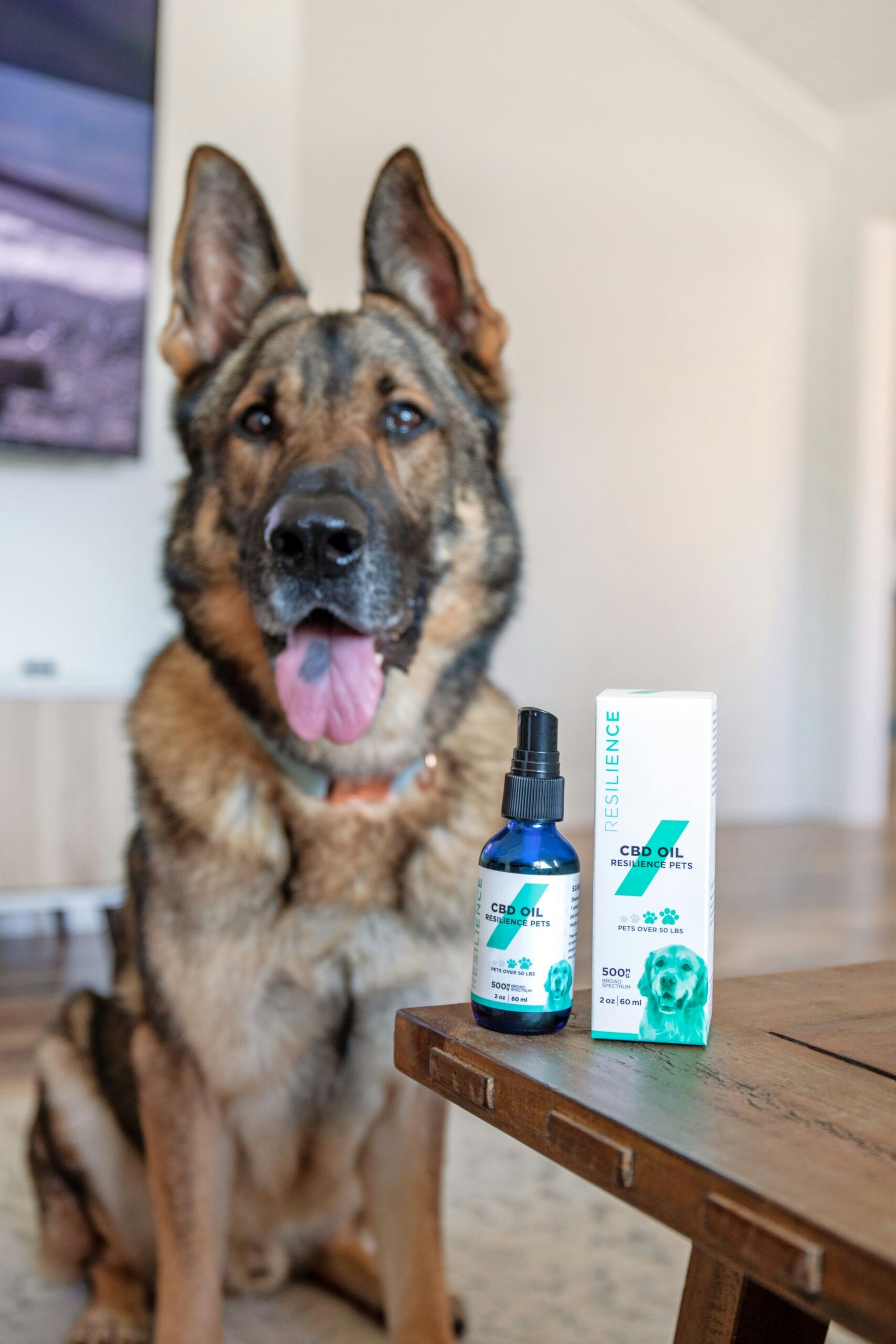Preventing Pet Obesity: A Balanced Diet and Exercise Plan
Over recent years, the prevalence of obesity in pets has seen a significant and concerning rise. Much like in humans, excessive weight in pets can lead to a host of health complications. Conditions such as diabetes, heart disease, joint problems, and a reduced lifespan are direct consequences of obesity, placing these animals at unnecessary risk. As pet owners, the responsibility to maintain our pets’ health primarily falls on us, highlighting the critical importance of keeping a close watch on their weight.
Obesity in pets doesn’t merely affect their physical health, but it can also impact their overall well-being and quality of life. Extra weight can hinder their ability to move freely, play, and engage in daily activities, leading to a sedentary lifestyle. Such a lifestyle, compounded by obesity, sets a vicious cycle that exacerbates health issues, making intervention more difficult as time progresses. By ensuring our pets remain at a healthy weight, we contribute significantly to their enjoyment of life and their ability to perform natural behaviors.
The rise in obesity rates among pets points to a broader issue often rooted in diet and exercise. Many pet owners might unknowingly contribute to the problem by overfeeding or choosing nutritionally imbalanced foods that are high in calories. Furthermore, insufficient physical activity is a key factor. Pets, much like their human counterparts, require regular exercise to burn off calories and maintain muscle mass. A balanced diet and an adequate exercise regimen are fundamental components in preventing obesity and promoting health in our furry companions.
Ultimately, maintaining a pet’s healthy weight is not solely about appearance but about extending their lifespan and enhancing their quality of life. A concerted effort in managing their diet and encouraging regular exercise can prevent the onset of obesity and the multitude of associated health risks. Understanding these concepts sets the groundwork for a detailed exploration of specific dietary plans and exercise routines that will follow in subsequent sections of this discussion.
Identifying Obesity in Pets
Identifying whether a pet is overweight or obese is a crucial step in maintaining their overall health and well-being. Just like in humans, excess weight in pets can lead to a multitude of health issues, including joint pain, diabetes, and cardiovascular diseases. Pet owners can look for several visual and physical cues to determine if their furry friend might be carrying extra weight.
One of the primary indicators is difficulty in feeling the pet’s ribs. In a healthy pet, ribs should be easily felt without a thick layer of fat over them. Gently run your hands along your pet’s sides; if you have to press firmly to feel their ribs, your pet may be overweight. Another visual cue is a prominent waistline when viewed from above. Pets should have an observable narrowing in the abdominal area, just behind the ribs. If the waist is not visible or there is a bulging in the abdomen, this could indicate excessive weight.
Reduced mobility is another red flag. If your pet is reluctant to partake in physical activities they once enjoyed, such as playing fetch or climbing stairs, it may be due to the strain of carrying extra weight. Furthermore, difficulty in breathing during mild exertion or reduced endurance can also signal obesity. Monitoring changes in your pet’s behavior and physical abilities is essential for early detection.
Veterinary guidelines, such as the Body Condition Score (BCS), offer a standardized method for assessing a pet’s weight status. The BCS system ranges from 1 to 9, with 1 indicating extreme underweight and 9 signifying severe obesity. Ideally, a healthy pet should fall between the scores of 4 and 5. Regular veterinary check-ups can provide personalized insights and recommendations based on your pet’s specific needs.
Incorporating these evaluations into routine pet care can help pet owners detect and address obesity early, thereby enhancing their pet’s quality of life and longevity.
The Role of a Balanced Diet
Maintaining a balanced diet is crucial in preventing pet obesity, as it provides pets with the necessary nutrients while ensuring they maintain a healthy weight. A balanced diet not only contributes to a pet’s overall health but also aids in preventing various obesity-related health issues.
There are different types of pet food available on the market, categorized mainly into commercial and homemade options. Commercial pet foods are specifically formulated to cater to an animal’s nutritional needs, offering a convenient option for pet owners. These commercial diets range from dry kibble and wet canned food to specialty diets found at veterinary clinics. Brands may vary in quality; therefore, it is important to choose one that meets the pet food standards set by the Association of American Feed Control Officials (AAFCO).
Homemade pet food, on the other hand, allows pet owners to have control over the ingredients, ensuring their pets consume high-quality, fresh food. However, creating a balanced homemade diet can be challenging and time-consuming. It requires precise knowledge of the pet’s nutritional requirements, which includes an adequate amount of protein, fats, carbohydrates, vitamins, and minerals.
Essential nutrients play a significant role in a pet’s health. Protein helps in muscle development and repair, while fats are vital for energy and supporting cell function. Carbohydrates provide a digestible energy source, and vitamins and minerals support various bodily functions such as immune health, bone structure, and coat condition.
Consulting with a veterinarian is essential when determining the appropriate diet for an individual pet. A veterinarian can provide guidance based on the pet’s specific needs, age, weight, activity level, and any existing health conditions. They can also suggest portion sizes to avoid overfeeding and recommend special diets for pets with unique dietary requirements. This tailored approach ensures that the dietary plan is not only balanced but also optimized for the pet’s overall well-being and longevity.
Portion Control and Feeding Schedules
Managing portion sizes and adhering to a regular feeding schedule are fundamental steps in preventing pet obesity. Proper portion control helps ensure that pets receive the right amount of nourishment without the risk of overeating. Measuring portions accurately is key to maintaining an ideal weight. Using standard measuring cups or a kitchen scale can provide precise measurements, preventing overfeeding.
Understanding pet food labels is equally important. Labels typically provide serving size recommendations based on your pet’s weight, age, and activity level. However, these guidelines are average estimates and might need adjustment considering your pet’s unique needs. Consulting with a veterinarian can offer personalized recommendations tailored to your pet’s health and lifestyle.
Overfeeding often occurs through treats and table scraps. It’s essential to monitor the quantity and frequency of these extra snacks. Opt for healthy, low-calorie treats and account for their calorie content in your pet’s daily intake. Similarly, eliminating or significantly reducing table scraps can prevent the ingestion of calorie-dense, nutritionally imbalanced foods that contribute to weight gain.
Scheduled feeding, as opposed to free-feeding, offers numerous benefits. By allocating specific meal times, you can better regulate your pet’s calorie intake and monitor their eating habits, making it easier to detect deviations or health issues. Scheduled meals also help create a routine, reducing persistent hunger and begging behaviors. In contrast, free-feeding, where food is available at all times, often leads to overeating and difficulties in weight management.
Implementing these strategies requires consistency and attention. By prioritizing portion control and adhering to a structured feeding schedule, pet owners can significantly reduce the risk of obesity, promoting a healthier, happier life for their furry companions.
Incorporating Exercise into Your Pet’s Routine
Regular physical activity plays a pivotal role in maintaining a healthy weight for pets. Incorporating exercise into your pet’s daily routine not only aids in weight management but also promotes overall well-being. Different types of exercises cater to specific needs, breeds, ages, and health conditions, ensuring that pets receive suitable and enjoyable physical activities.
For dogs, walking and running are excellent ways to keep them active. Daily walks provide the necessary cardiovascular exercise and mental stimulation. Breeds with higher energy levels, such as Border Collies and Labradors, may benefit from more vigorous activities like running or playing fetch. Conversely, smaller or older dogs might require shorter, slower-paced walks tailored to their energy levels and physical abilities.
Interactive toys and games can significantly benefit a variety of pets. For instance, cats often enjoy activities that stimulate their hunting instincts. Toys that mimic prey or laser pointers can encourage cats to move and chase, helping to keep them agile and active. Similarly, small pets like rabbits and ferrets can engage in tunnels and obstacle courses designed to pique their curiosity and encourage movement.
It’s crucial to adjust the exercise regimen according to the pet’s age and health conditions. Puppies and kittens, while active, require shorter, more frequent play sessions to avoid exhaustion. Senior pets, particularly those with arthritis or other health concerns, might prefer gentler activities such as slow, short walks or guided exercise routines to minimize strain on their joints.
For overweight pets, starting with lower-impact activities can gradually build their endurance and capabilities. Aqua therapy is an excellent option for dogs needing to ease into physical activity without putting undue stress on their joints. This form of exercise especially benefits breeds prone to joint issues, such as German Shepherds and Bulldogs.
Incorporating a variety of physical activities into your pet’s routine is essential in preventing obesity and ensuring a happy, healthy life. By tailoring exercises to fit the specific needs of different pets, owners can provide the best possible care. Regularly consulting with a veterinarian can further refine exercise plans to suit individual health conditions and breed requirements.
Making Exercise Fun and Engaging
Ensuring that pets remain active is crucial in preventing obesity, but this doesn’t mean exercise has to be monotonous. Infusing creativity into physical activities can make exercise sessions enjoyable and engaging for pets, ensuring that they remain both physically and mentally stimulated.
One effective way to make exercise fun is through interactive games. For example, fetch is a simple yet invigorating game that dogs usually relish. Equally, cats can be entertained with toy mice or laser pointers, stimulating their predatory instincts. Other versatile activities range from treasure hunts, where pets search for treats hidden around the house or garden, to agility courses that enhance their physical capabilities.
Incorporating tools like tug ropes or interactive feeders can also significantly enhance physical activity for pets. Toys designed to dispense treats as pets move them around can motivate continuous play and exercise. For dogs, a flirt pole, which is essentially a stick with a lure attached, can simulate the thrill of chasing prey, while for cats, feather wands can achieve a similar enticing effect.
It’s equally crucial to adapt and vary these activities to avoid monotony. Why not include a mix of indoor and outdoor exercises? Walks in different environments, like parks, beaches, or forest trails, can provide new stimuli and keep pets enthusiastic. Rotating toys and introducing new challenges every so often can help maintain pets’ interest and motivation to participate in physical activities. This variability ensures that exercise remains an exciting part of their daily routine, minimizing the risk of them losing interest over time.
By making exercise an enjoyable and engaging experience, pet owners can effectively contribute to their pets’ overall health, ultimately aiding in the prevention of obesity. Diverse activities and tools not only encourage physical activity but also foster a deeper bond between pets and their owners, making every moment of exercise a cherished experience.
Monitoring and Adjusting the Plan
In order to effectively prevent pet obesity, it is critical to regularly monitor and adjust your pet’s diet and exercise plan. To begin with, keeping a close eye on your pet’s weight is crucial. Weigh your pet at consistent intervals, ideally once a month, to get an accurate picture of their progress. Tracking weight changes allows you to recognize any trends or patterns that might indicate a need for adjustment in their dietary and exercise regime.
An effective way to track a pet’s progress is by maintaining a log. This log should include details such as the type and amount of food given, the duration and type of exercise performed, and weekly weight measurements. Such documentation can assist in identifying plateaus, which are periods where a pet’s weight remains constant despite following the weight management plan. Recognizing these plateaus early can help in making timely adjustments to prevent weight gain or achieve further weight loss.
When addressing weight plateaus, consider modifying the components of your pet’s diet by reviewing their caloric intake and adjusting portion sizes if necessary. Similarly, examine the exercise plan to ensure it is adequate and engaging. Introducing variations or increasing the intensity of physical activities can effectively keep your pet’s weight in check.
Regular check-ups with a veterinarian are indispensable for professional guidance. Veterinarians can provide expert advice based on medical examinations and can help in customizing a balanced diet and exercise plan tailored to your pet’s specific needs. They can also perform more accurate weight assessments using specialized equipment and provide insights into any underlying health conditions that might affect your pet’s weight.
Consistently monitoring and adjusting your pet’s plan ensures sustained progress and promotes long-term health. By closely tracking weight, recognizing plateaus, and seeking professional input, you can take proactive measures to prevent pet obesity effectively.
Preventing Relapse and Maintaining Long-Term Success
Preventing weight regain in pets and ensuring their long-term health requires a commitment to establishing and maintaining healthy lifestyle habits. Central to this endeavor is consistent and balanced feeding, which not only helps in avoiding pet obesity but also promotes overall well-being. It is essential to continue monitoring your pet’s diet even after achieving the desired weight to ensure they do not fall back into unhealthy patterns.
Education plays a pivotal role in maintaining your pet’s healthy weight. Pet owners should stay informed about proper nutrition, safe exercise regimens, and any breed-specific requirements. Continuing to educate yourself about the latest research and recommendations in pet healthcare can help you make informed decisions that contribute to your pet’s longevity and quality of life.
Creating a supportive environment is also crucial. Engage family members and other pet caregivers in maintaining the pet’s health regimen. Consistency is key, so ensuring that everyone involved understands and adheres to the pet’s dietary and exercise plans can prevent mixed messages and unhealthy habits. Additionally, regular communication with your veterinarian can provide continuous professional guidance and support tailored to your pet’s needs.
Ongoing motivation can be a significant driver in preventing relapse. Setting realistic and incremental goals can help in maintaining progress. Celebrate small achievements to keep motivated, but avoid treats that counteract the weight management efforts. Alternative rewards, such as extra playtime or a new toy, can provide positive reinforcement without affecting the diet.
Finally, remember that maintaining a healthy weight is a lifelong commitment for your pet. Regular exercise, whether it’s a daily walk, playing fetch, or indoor activities, should be part of the routine. Monitoring weight and making adjustments as necessary can prevent small setbacks from turning into significant issues. With dedicated effort and the right strategies, you can ensure long-term success and a healthier, happier life for your pet.















Post Comment